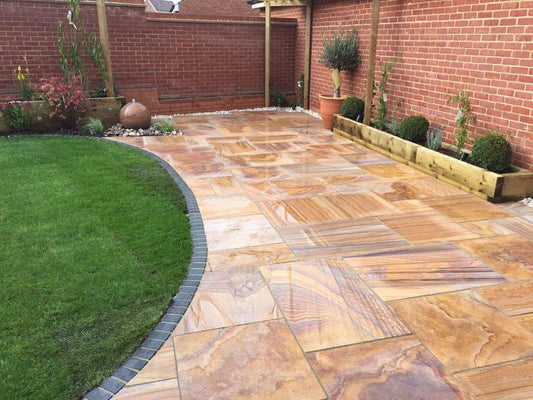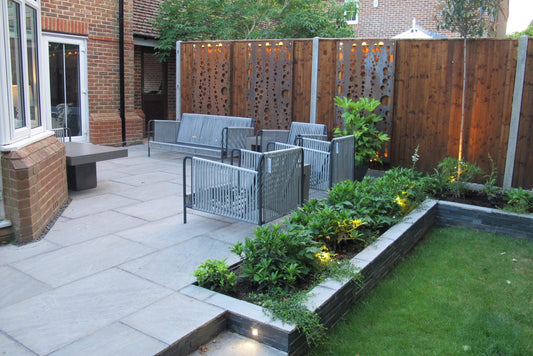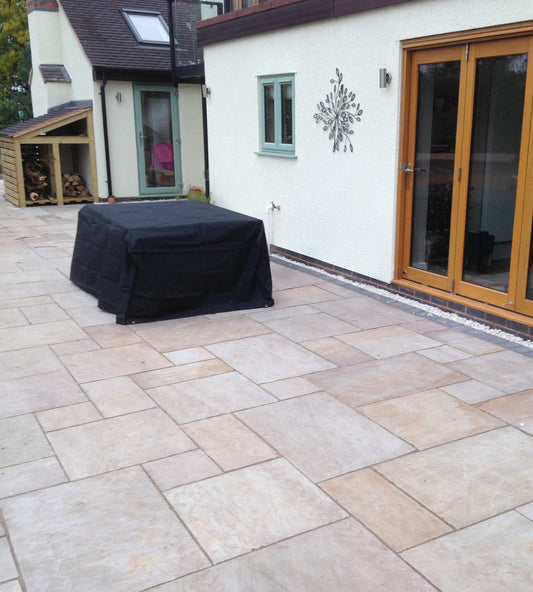
Can You Pressure Wash Porcelain Paving?
Share
Porcelain paving has become increasingly popular in recent years due to its durability, low maintenance, and attractive appearance. As a versatile option for outdoor spaces, porcelain paving offers homeowners a stylish and practical solution for patios, walkways, and even driveways. However, like any outdoor surface, porcelain pavers can accumulate dirt, grime, and stains over time. One common question homeowners have is whether they can use a pressure washer to clean their porcelain paving.
Can you pressure wash porcelain paving?
Yes, you can pressure wash porcelain paving, as it is a highly durable and non-porous material that can withstand the force of a pressure washer. Porcelain's inherent strength and resistance to water absorption make it an ideal candidate for pressure washing. However, it is essential to use the correct pressure setting and nozzle to avoid damaging the surface. When pressure washing porcelain paving, use a low to medium pressure setting between 1200 to 1900 PSI and a wide fan nozzle to distribute the water evenly across the surface.
How to Pressure Wash Porcelain Paving
- Clear the area of any furniture, potted plants, or decorations.
- Sweep the porcelain paving to remove loose debris and dirt, ensuring a clean surface for pressure washing.
- Set your pressure washer to a low to medium pressure setting (1200-1900 PSI) to prevent potential damage to the porcelain surface.
- Choose a wide fan nozzle (25 or 40-degree) to evenly distribute the water and minimize the risk of concentrated pressure on the pavers.
- Hold the pressure washer nozzle at a consistent distance of about 12 inches from the surface, maintaining a uniform cleaning pattern.
- Begin washing the porcelain paving, starting from one end and working your way systematically across the area to ensure thorough coverage.
- For stubborn stains, use a soft-bristled brush and a mild detergent designed for porcelain surfaces before pressure washing to gently agitate the affected areas.
- Rinse the surface thoroughly with the pressure washer to remove any remaining dirt or cleaning solution, leaving the porcelain paving clean and refreshed.
- Allow the porcelain paving to air dry completely before replacing any furniture or decorations.
Tips for Maintaining Porcelain Paving
- Regularly sweep the surface to prevent the buildup of dirt and debris, which can contribute to staining and discoloration over time.
- Clean spills and stains promptly to avoid permanent discoloration, as certain substances can penetrate the surface if left untreated.
- Use a mild detergent specifically designed for porcelain surfaces when needed, ensuring compatibility and minimizing the risk of damage.
- Avoid using harsh chemicals or abrasive cleaning tools that can scratch or damage the surface, as porcelain's durability can be compromised by improper care.
- Consider applying a protective sealer to enhance the longevity and appearance of your porcelain paving, providing an extra layer of defense against stains and weathering.
When using a pressure washer on porcelain paving, always keep the nozzle moving to avoid concentrating too much pressure on one spot. Maintain a consistent distance and angle between the nozzle and the surface to ensure even cleaning. If you encounter stubborn stains, you may need to make additional passes or use a mild detergent, but always exercise caution to prevent damage to the porcelain surface.
By following these guidelines and tips, you can safely pressure wash your porcelain paving and keep it looking beautiful for years to come. Regular maintenance and cleaning will help preserve the appearance and integrity of your porcelain paving, ensuring that it remains a stunning and functional addition to your outdoor space. For more information on different types of paving materials and their care requirements, explore our guides on sandstone, limestone, and setts.
You can also read about pros and cons of porcelain paving.How does porcelain paving compare to sandstone paving?
When deciding between porcelain and sandstone paving, it's essential to consider factors such as durability, maintenance, and aesthetic preferences. Porcelain paving is known for its low porosity, making it resistant to staining and easier to clean, while sandstone paving offers a natural, rustic appearance that some homeowners prefer. Our in-depth comparison of sandstone vs limestone vs porcelain can help you make an informed decision.
What is the best way to clean porcelain paving?
Cleaning porcelain paving is relatively simple due to its low porosity and stain-resistant properties. Regular sweeping and occasional washing with a mild detergent and water are usually sufficient to keep your porcelain paving looking its best. For tougher stains or deep cleaning, consider using a specialized patio cleaner designed for use on porcelain surfaces.
Can I use a pressure washer on my porcelain patio?
Yes, you can use a pressure washer on your porcelain patio, as the material is durable and can withstand the force of pressurized water. However, it's crucial to use the correct pressure setting and nozzle to avoid damaging the surface. Always start with a low-pressure setting and gradually increase it if needed, holding the nozzle at a safe distance from the paving.
How do I maintain the appearance of my porcelain paving?
To maintain the appearance of your porcelain paving, regularly sweep the surface to remove dirt and debris, and clean up spills promptly to prevent staining. If you notice any signs of wear or damage, such as cracks or chips, address them quickly to prevent further deterioration. Applying a suitable sealer can also help protect your paving and enhance its longevity. Our range of paving adhesives, grout, and primer includes products specifically designed for use with porcelain paving.
What are the best color options for porcelain paving?
Porcelain paving is available in a wide range of colors to suit various design preferences and landscaping styles. Some popular options include beige, grey, and black, which can create a modern and sophisticated look. For a more natural appearance, consider shades that mimic the colors of stone or wood. Our collection of Kandla Grey porcelain paving offers a stunning example of a contemporary yet timeless color choice.






